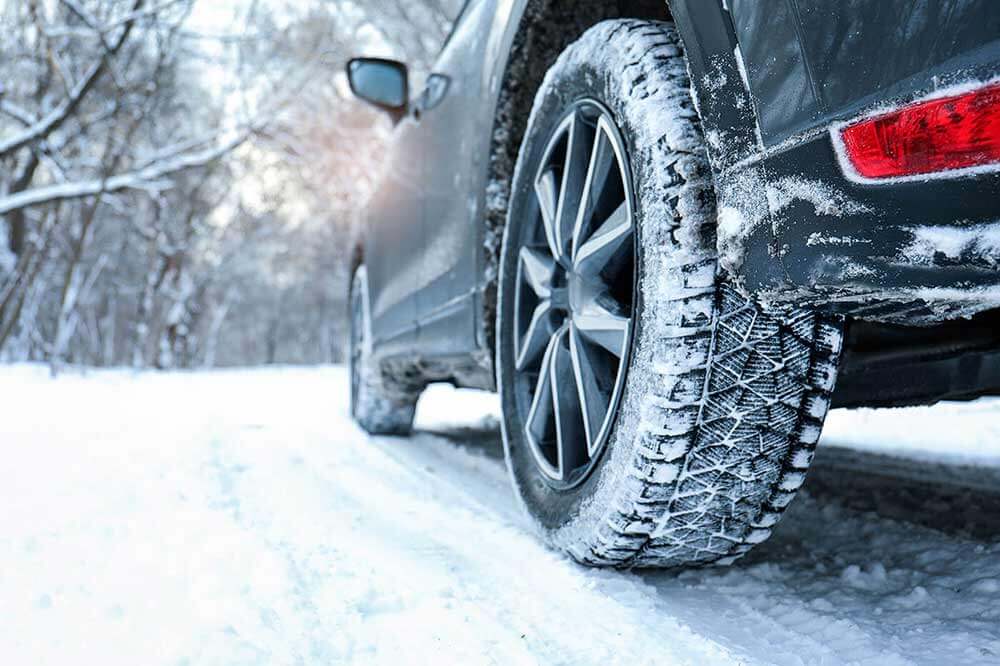Next time you’re cruising down the highway at 100km/h, thinking about what you need to pick up for dinner on your way home from work, consider this: the only things keeping your car on the road are four pieces of rubber about the size of your hand. With all of the impressive technology in modern cars and trucks that makes driving intuitive, comfortable and safe, it can be easy to forget the importance of tires. While we tend to think of tires as a fairly low-tech component (if we think of them at all) tires are actually one of the most important and hardest-working things on your vehicle. As such, tire technology has come a very long way in recent years, and winter tires in particular can make a vital difference in your vehicle’s cold weather performance.
Here are the basic things to know about
If your tires say “All-Season” on them, that means they’re good for winter, right? Wrong. All-season tires, now often called “3-season” tires, are usually designed for temperatures above seven degrees celsius. Anything below that, and they no longer provide the same degree of traction, leaving you vulnerable to skidding, sliding and hydroplaning. All-weather tires, by comparison, are designed to perform decently across a wide range of temperatures and conditions, making them a good choice for most vehicles, depending on the climate and conditions. For even better winter performance, especially if you live somewhere that gets a lot of snow, you might also consider winter tires, which are designed specifically to grip on snow and ice in sub-zero temperatures.
All tires may look pretty much the same at a glance, but there are important differences that can greatly affect your vehicle’s performance and your safety on the road. Winter tires, like all tires, are made of rubber, but it’s not just any rubber. Tire companies have spent decades and many millions of dollars developing new compounds that are specifically suited to cold-weather performance. Basically, it works like this: when normal rubber warms up, it gets stickier and grippier. When it cools down, it gets harder and more slippery. Because a tire’s most basic job is to provide traction on the road, winter tires are made out of special compounds formulated to remain soft and sticky even when temperatures drop. This means that the surface of the tire, rather than simply rolling over the road’s bumps and grooves, will form around them, giving you the traction you need for acceleration, cornering and braking. This works not just with the rough surface of pavement, but also with the subtler textures of snow and ice.
All-season tires have an easier job to do by comparison, and are designed for maximum comfort and quietness in spring, summer and fall, when roads are mostly warm and dry. Winter tires and all-weather tires, in contrast, need to contend with wet, slushy, icy and snowy roads, and one of the ways they handle this is with their tread. All-weather and winter tires tend to have chunkier treads and deeper grooves than their summer counterparts, as well as special channels called “siping” to push water and slush out of the way. This helps the tires grip on snowy roads, and keeps them from hydroplaning on wet or slushy ones. Winter tires can also be equipped with studs, which provide superior traction in extreme winter conditions.
The basic facts of life in Canada mean that if you’re on the road between December and March, you should have all-weather or winter tires on your vehicle, and in some areas this is required by law. Rather than simply helping you drive over snow and ice, these tires are specifically designed to help keep you safely on the road when the temperature outside falls close to freezing. Even if your vehicle has all-wheel drive, it’s no substitute for the right tires. While AWD can be helpful in accelerating on slippery terrain like snow, ice and gravel, it won’t help you as much with cornering and braking as a good set of winter or all-weather tires. Also, like all other kinds of tires, winter tires don’t last forever, so plan to replace your set after about six years, regardless of the shape of the tread.
Jeremy Freed is a freelance writer and editor based in Toronto. His writing about fashion, travel, food and design appears in Sharp, Harry and re:Porter magazines, among many others.
Jeremy Freed is a paid spokesperson of Sonnet Insurance.
